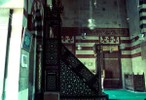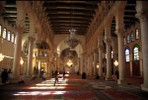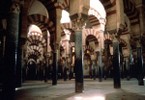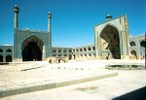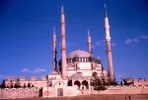Previous Lecture | Next Lecture
Concepts
Islamic Architecture: Is taken today to mean the architecture built by or for Muslims, or that built in Islamic lands or under Islamic government, a large corpus indeed.
Functional Typology of Religious Structures
- Structures for prayer:
- neighborhood mosque (masjid).
- congregational mosque (jami or masjid jami).
- prayer enclosure (musalla or namaz-gah).
- Structures for religious education
- Qur'anic school for children (kuttab).
- religious college (madrasa).
- Monastic structures:
- Memorial structures:
- saint (wali) tomb or reliquary (maqam or mazar).
- memorial of a vision (mashhad).
- mausoleum (qubba or turba) with charitable functions attached.
- funerary garden or enclosure (rawd).
Monuments
Liturgical Elements of the Mosque
Mihrab: A recess, mostly in the form of arched niche, in the qibla wall, facing the direction toward Mecca.
Minaret: A tower, circular, octagonal, or square in section, built next to or in a mosque, from which the Muslims are called to prayer.
Minbar: A pulpit near the mihrab, from which the prayer leader gives the sermon on Fridays.
Ablution Fountain: A feature frequently but not always encountered in mosques. It is usually put in the center of the mosque's courtyard for the worshipers to perform their ritual washing before prayer.
The Hypostyle Mosque: Mosque in which the prayer hall is formed of rows of vertical supports, or columns, that can multiply indefinitely. Dominant type in the early period.
The Iwan Mosque: Mosque in which the prayer hall is an iwan, or more, up to four iwans, surrounding a courtyard. It was the most popular type in the medieval period, and remained dominant in Iran.
The Central-Dome Mosque: A Mosque in which the prayer hall's space is dominated by a central dome surrounded by smaller and lower semi-domes. It was introduced by the Ottomans in the 15th century.



